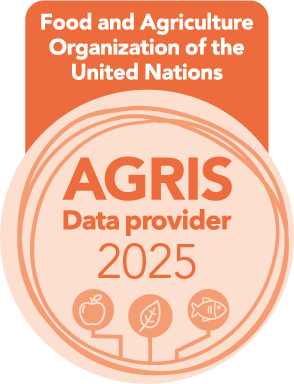Anthropometric and Socio-Economic Determinants of Dietary Diversity Scores in University Students
Anthropometric and Socio-Economic Determinants of Dietary Diversity Scores
DOI:
https://doi.org/10.54393/df.v5i03.171Keywords:
Nutrition, Anthropometry, Socioeconomic Status, Dietary Diversity ScoreAbstract
Eating habits, particularly, diversity of diets of university students, are not reported. Objectives: To investigate the dietary habits with special consideration of the dietary diversity score of university students at Bacha Khan University Charsadda (BKUC). Methods: A cross-sectional study design was conducted on a sample (n=200) of students from various teaching departments. Data on anthropometry and dietary intake were collected. Dietary diversity score (DDS) was calculated by employing a normal food category score scheme. Data on anthropometrics (height, weight, BMI, waist circumference (WC), and waist-to-hip ratio (WHR), and socioeconomic were recorded in a questionnaire. Group differences were evaluated using one-way ANOVA and t-tests for evaluating differences in DDS based on SES and the anthropometric measures. Results: As expected, significantly higher scores of DDS were found in the subjects who had higher economic status (p<0.001). A high negative relationship existed between DDS and anthropometrics (BMI, WC, and WHR), especially in the female students (p<0.05). The intake of grain, fruit, vegetable, dairy, and protein, and an improved intake in DDS quartiles (p<0.01), once again validated DDS as a solid measure of dietary diversity and intake. Conclusions: It was concluded that higher DDS are associated with better intake of special food categories and better anthropometric indicators. These findings reinforce the importance of promoting dietary diversity to promote health and prevent chronic disease.
References
Islam B, Ibrahim TI, Wang T, Wu M, Qin J. Current trends in household food insecurity, dietary diversity, and stunting among children under five in Asia: a systematic review. Journal of Global Health. 2025 Jan; 15: 04049. doi: 10.7189/jogh.15.04049. DOI: https://doi.org/10.7189/jogh.15.04049
Heidari-Beni M, Hemati Z, Qorbani M. The dietary diversity score: methods, indicators, and applications to general population. InBiomarkers in Nutrition. Cham: Springer International Publishing. 2022 Oct: 293-306. doi: 10.1007/978-3-031-07389-2_17. DOI: https://doi.org/10.1007/978-3-031-07389-2_17
Cámara M, Giner RM, González-Fandos E, López-García E, Mañes J, Portillo MP et al. Food-based dietary guidelines around the world: a comparative analysis to update AESAN scientific committee dietary recommendations. Nutrients. 2021 Sep; 13(9): 3131. doi: 10.3390/nu13093131. DOI: https://doi.org/10.3390/nu13093131
Kong W, Jiang T, Ning Y, Guo Y, Liu H, Lyu X et al. Dietary diversity, diet quality, and oxidative stress in older adults. Geriatric Nursing. 2022 Nov; 48: 158-63. doi: 10.1016/j.gerinurse.2022.09.013. DOI: https://doi.org/10.1016/j.gerinurse.2022.09.013
Saaka M, Mutaru S, Osman SM. Determinants of dietary diversity and its relationship with the nutritional status of pregnant women. Journal of Nutritional Science. 2021 Jan; 10: e14. doi: 10.1017/jns.2021.6. DOI: https://doi.org/10.1017/jns.2021.6
Dello Russo M, Formisano A, Lauria F, Ahrens W, Bogl LH, Eiben G et al. Dietary diversity and its association with diet quality and health status of European children, adolescents, and adults: results from the I. Family Study. Foods. 2023 Dec; 12(24): 4458. doi: 10.3390/foods12244458. DOI: https://doi.org/10.3390/foods12244458
Heidari‐Beni M, Riahi R, Massoudi S, Qorbani M, Kelishadi R. Association between dietary diversity score and anthropometric indices among children and adolescents: the weight disorders survey in the CASPIAN‐IV study. Journal of the Science of Food and Agriculture. 2021 Sep; 101(12): 5075-81. doi: 10.1002/jsfa.11152. DOI: https://doi.org/10.1002/jsfa.11152
Kumar I and Gautam M. Determinants of Dietary Diversity score for the rural households of Uttar Prades State. International Journal of Food, Nutrition and Dietetics. 2022; 10(1): 9-16.
Alam I, Ullah R, Jan A, Sehar B, Khalil AA, Naqeeb H et al. Improvement in cardio-metabolic health and immune signatures in old individuals using daily chores (Salat) as an intervention: A randomized crossover study in a little-studied population. Frontiers in Public Health. 2022 Oct; 10: 1009055. doi: 10.3389/fpubh.2022.1009055. DOI: https://doi.org/10.3389/fpubh.2022.1009055
Gómez-Ambrosi J, Silva C, Galofré JC, Escalada J, Santos S, Millán D et al. Body mass index classification misses subjects with increased cardiometabolic risk factors related to elevated adiposity. International Journal of Obesity. 2012 Feb; 36(2): 286-94. doi: 10.1038/ijo.2011.100. DOI: https://doi.org/10.1038/ijo.2011.100
Gul R, Khan I, Alam I, Uddin Z, Iqbal Z. Development of an innovative tool for assessment of dietary intake in the fasting month of ramadan-a ramadan-specific food frequency questionnaire. Journal of Innovative Sciences. 2021; 7(2): 206-317. doi: 10.17582/journal.jis/2021/7.2.206.214. DOI: https://doi.org/10.17582/journal.jis/2021/7.2.206.214
Nachvak SM, Abdollahzad H, Mostafai R, Moradi S, Pasdar Y, Rezaei M et al. Dietary diversity score and its related factors among employees of Kermanshah University of Medical Sciences. Clinical Nutrition Research. 2017 Oct; 6(4): 247. doi: 10.7762/cnr.2017.6.4.247. DOI: https://doi.org/10.7762/cnr.2017.6.4.247
Tiew KF, Chan YM, Lye MS, Loke SC. Factors associated with dietary diversity score among individuals with type 2 diabetes mellitus. Journal of Health, Population, and Nutrition. 2014 Dec; 32(4): 665.
Esfahani FH, Asghari G, Mirmiran P, Azizi F. Reproducibility and relative validity of food group intake in a food frequency questionnaire developed for the Tehran Lipid and Glucose Study. Journal of Epidemiology. 2010 Mar; 20(2): 150-8. doi: 10.2188/jea.JE20090083. DOI: https://doi.org/10.2188/jea.JE20090083
Azadbakht L, Mirmiran P, Azizi F. Dietary diversity score is favorably associated with the metabolic syndrome in Tehranian adults. International Journal of Obesity. 2005 Nov; 29(11): 1361-7. doi: 10.1038/sj.ijo.0803029. DOI: https://doi.org/10.1038/sj.ijo.0803029
Popkin BM. Contemporary nutritional transition: determinants of diet and its impact on body composition. Proceedings of the Nutrition Society. 2011 Feb; 70(1): 82-91. doi: 10.1017/S0029665110003903. DOI: https://doi.org/10.1017/S0029665110003903
Thom G, Lean M. Is there an optimal diet for weight management and metabolic health?. Gastroenterology. 2017 May; 152(7): 1739-51. doi: 10.1053/j.gastro.2017.01.056. DOI: https://doi.org/10.1053/j.gastro.2017.01.056
Dreher ML. Whole fruits and fruit fiber emerging health effects. Nutrients. 2018 Dec; 10(12): 1833. doi: 10.3390/nu10121833. DOI: https://doi.org/10.3390/nu10121833
Awuchi CG, Igwe VS, Amagwula IO. Nutritional diseases and nutrient toxicities: A systematic review of the diets and nutrition for prevention and treatment. International Journal of Advanced Academic Research. 2020 Jan; 6(1): 1-46.
Shah S, Al Ktebi A, Alam I. Knowledge About Calcium-Rich Foods in Adolescent Girls in Charsadda–A Cross-Sectional Study: Knowledge About Calcium-Rich Foods in Adolescent Girls. Diet Factor (Journal of Nutritional and Food Sciences). 2024 Dec: 25-30. doi: 10.54393/df.v5i04.167. DOI: https://doi.org/10.54393/df.v5i04.167
Basit A and Alam I. Diet Factor. Journal of Nutritional and Food Sciences. 2025 Mar; 6: 1.
Rahman HU and Alam I. Nutritional and Vitamin D Status of University Students in Khyber Pakhtunkhwa, Pakistan: A Cross-Sectional Study: Nutritional and Vitamin D Status in Students. DIET FACTOR. Journal of Nutritional and Food Sciences. 2024 Dec: 19-24. doi: 10.54393/df.v5i04.159. DOI: https://doi.org/10.54393/df.v5i04.159
Downloads
Published
Issue
Section
License
Copyright (c) 2024 DIET FACTOR (Journal of Nutritional and Food Sciences)

This work is licensed under a Creative Commons Attribution 4.0 International License.
This is an open-access journal and all the published articles / items are distributed under the terms of the Creative Commons Attribution License, which permits unrestricted use, distribution, and reproduction in any medium, provided the original author and source are credited. For comments








